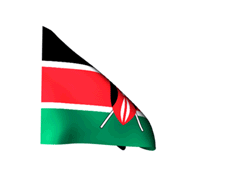THE EVOLUTION OF BRICS: BRAZIL-RUSSIA-INDIA-CHINA–SOUTH AFRICA

BRICS, an acronym for Brazil, Russia, India, China and South Africa, is an association amongst these five emerging national economies of the world. Initially, it was an association only amongst Brazil, Russia, India, and China (BRICs) until South Africa joined in 2011. The Heads of these States meet annually to about financial, economic and political matters that are common to all. Although it started as an informal and diplomatic meeting amongst the Foreign Ministers of the BRICS, but it gradually emerged as a powerful political and economic entity, far beyond the original concept tailored for the financial markets.
The successful Summits held at Yekaterinburg, Russia (2009) discussed about reformation of international financial institutions, sustainable development and measures to combat climate change; Brasilia, Brazil (2010) discussed about Iran nuclear programme, reformation of the International Monetary Fund (IMF) and the World Bank (WB) governance structures, promotion of multilateral trade, food security; Sanya, China (2011) discussed about combating terrorism in lines with UN, UN reform, economic cooperation based on national currencies, and the war in Libya; New Delhi (2012) discussed about anti-crisis measures and settlement issues related to Syria and Iran, integration of markets; Durban (2013) adopted a eThekwini Declaration and Action Plan which reflects the common approaches of the BRICS countries on urgent issues of multilateral cooperation, aid to Africa in terms of funding infrastructure projects; Fortaleza (2014) signed an agreement on establishing a New Development Bank (NDB) and a treaty on creating a Contingent Reserves Arrangement to financially aid the BRICS economies and aim at poverty reduction; Ufa, Russia (2015) had internet governance and cyber regulation and reformation of the international financial system on their agenda.
In this period, BRICS has evolved in an incremental manner, in areas of consensus amongst its members and has strengthened the coordination and cooperation in financial, economic and political governance. Intra-BRICS cooperation has emerged as a powerful economic breakthrough at the international level by providing a platform for discussing security issues and developing international policies on common matters. It has been observed over the time, that there has been a boost in the economic output of BRICS. By establishing NDB and the Reserve fund, BRICS has moved a step forward to give financial independence and stability to its nations by reducing their dependence on IMF and World Bank and to prevent short-term liquidity pressures. Moreover, it has broken the monopoly of IMF and WB which would motivate them to function transparently and efficiently.
The 8th Summit at Goa, India (2016) has on its agenda: to further institutionalize the BRICS cooperation, implement decisions from previous Summits, integrate and continue the existing mechanisms, and invent some mechanisms on cooperation. It will also be looking into combating terrorism measures, investment opportunities, women entrepreneurship and organize a trade fair to encourage Start-ups and provide a platform for young entrepreneurs from across BRICS nations to showcase their technologies. BRICS is cautiously being consolidated and gradually taking forward the institution-building process.
Daliparthy Harini
Legal Associate
The Indian Lawyer




































krunker hacks
Jun 6, 2019, 8:16 pmI am glad to be one of the visitors on this great website (:, appreciate it for posting .